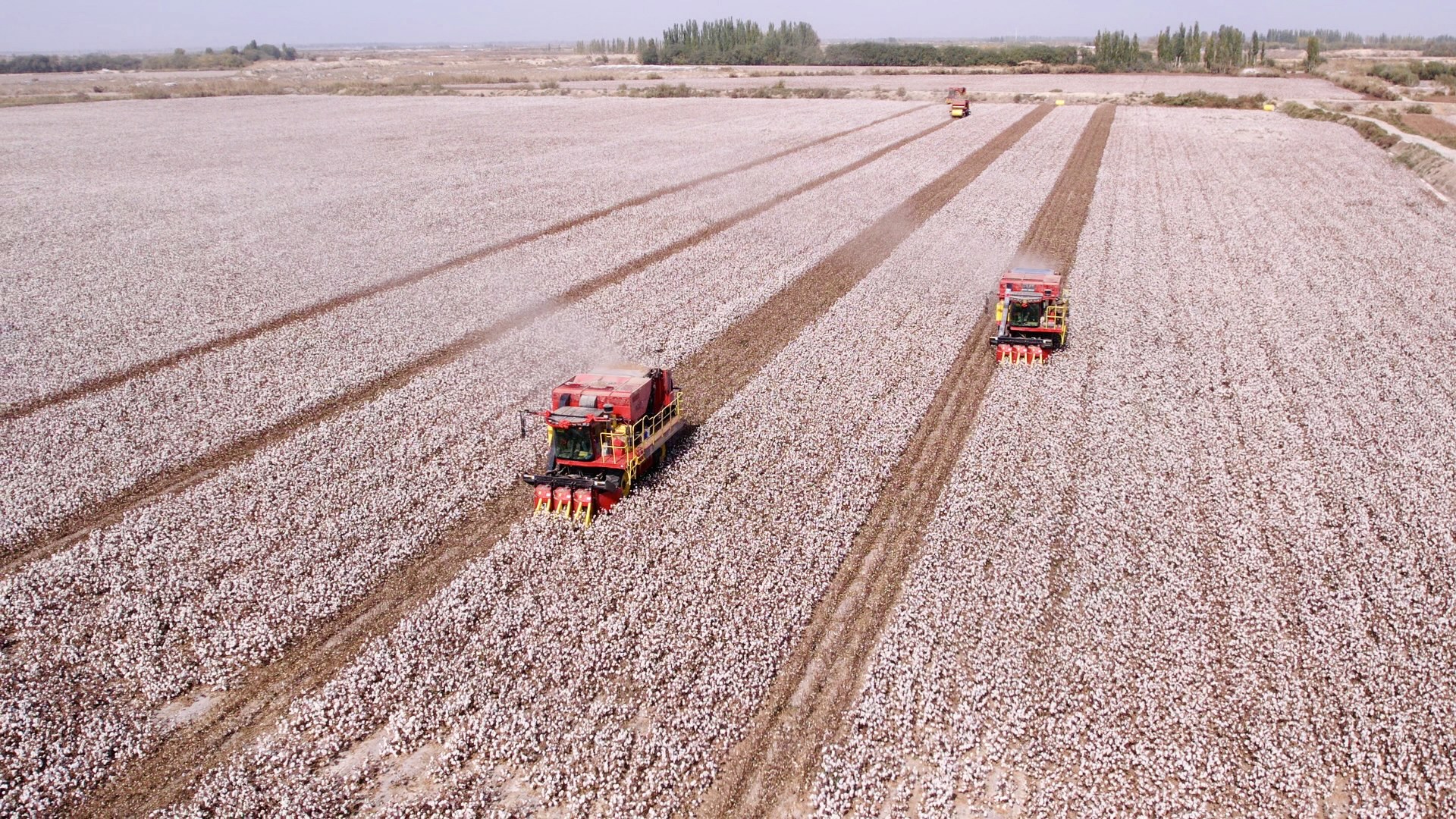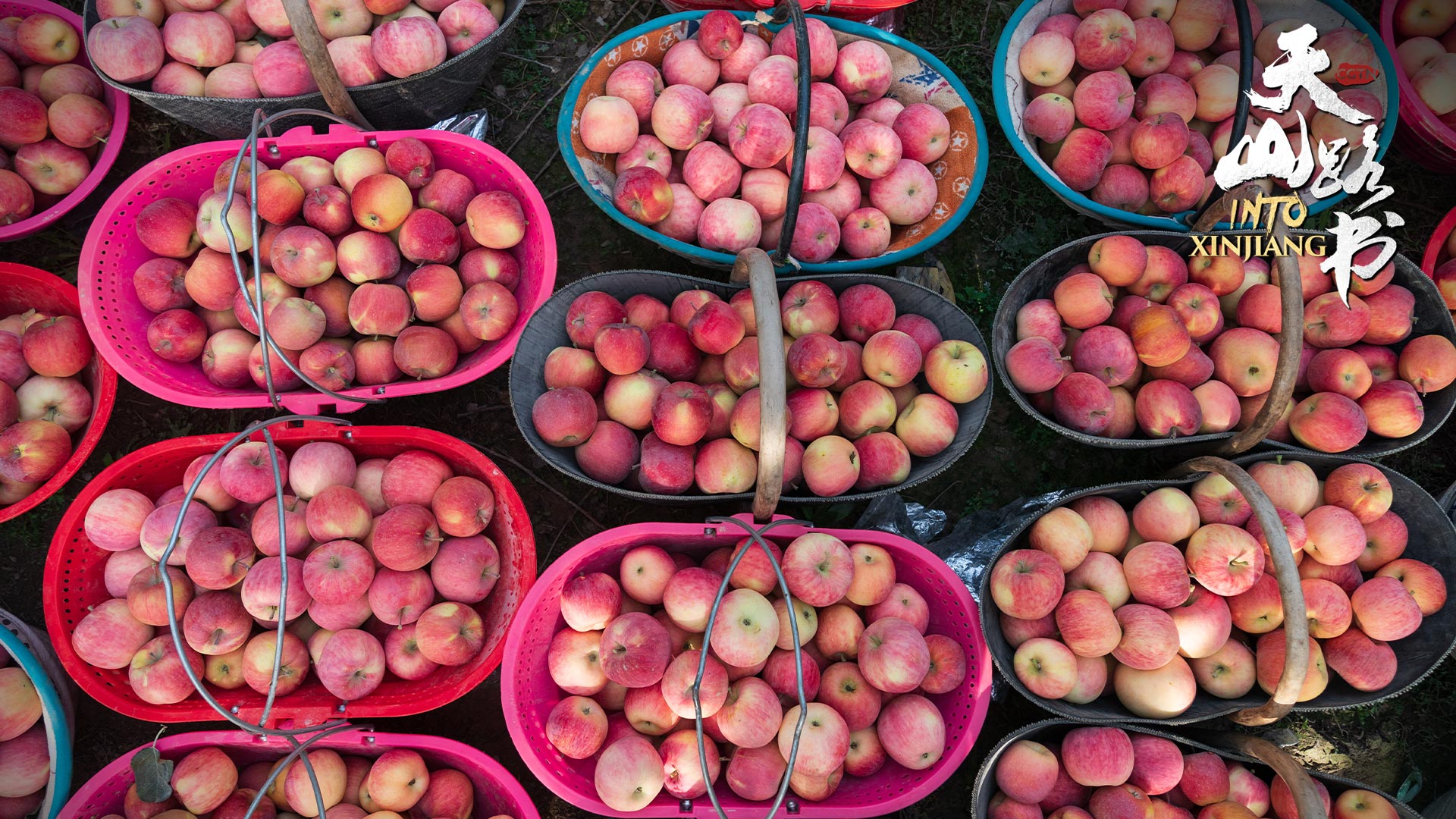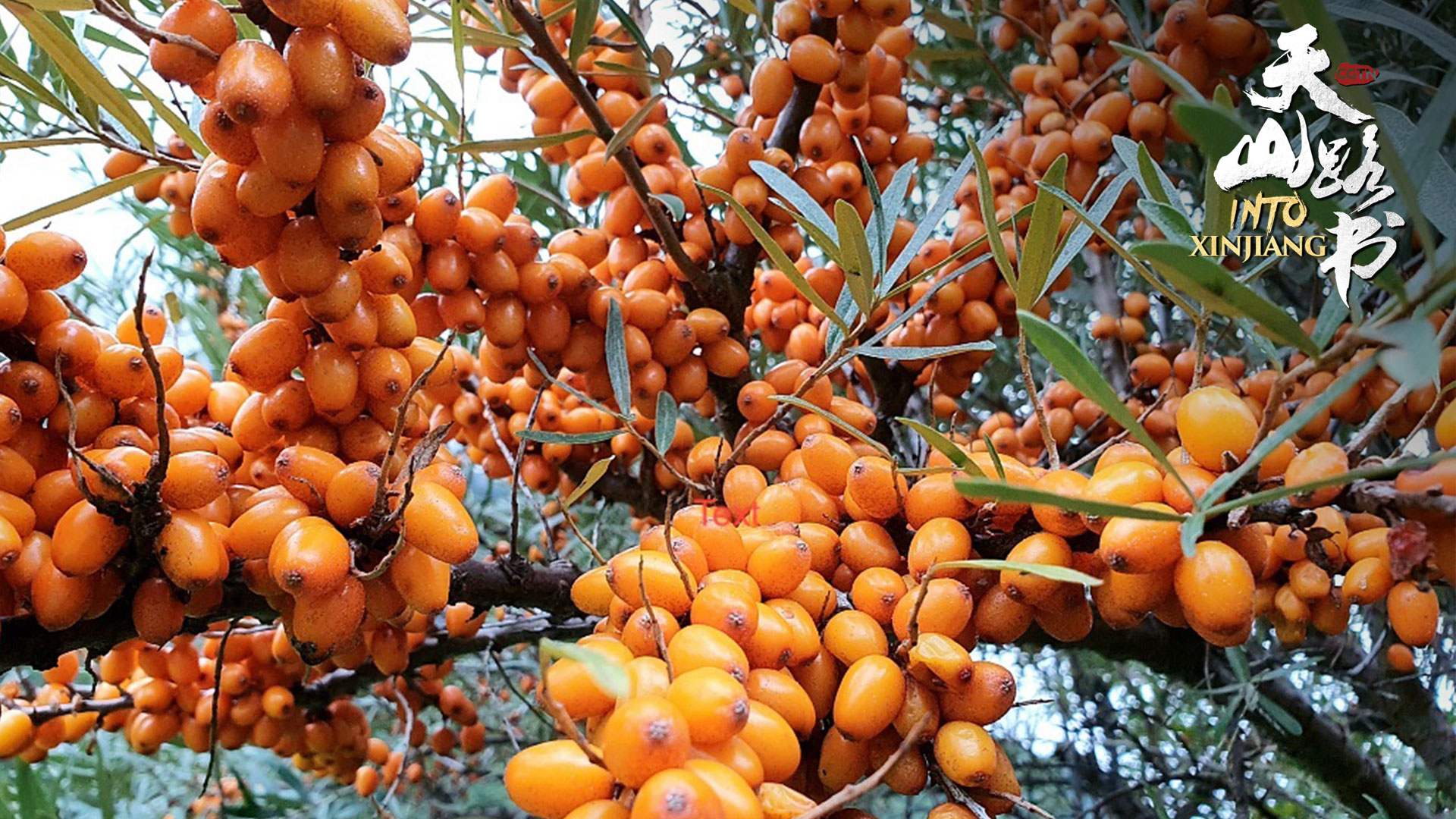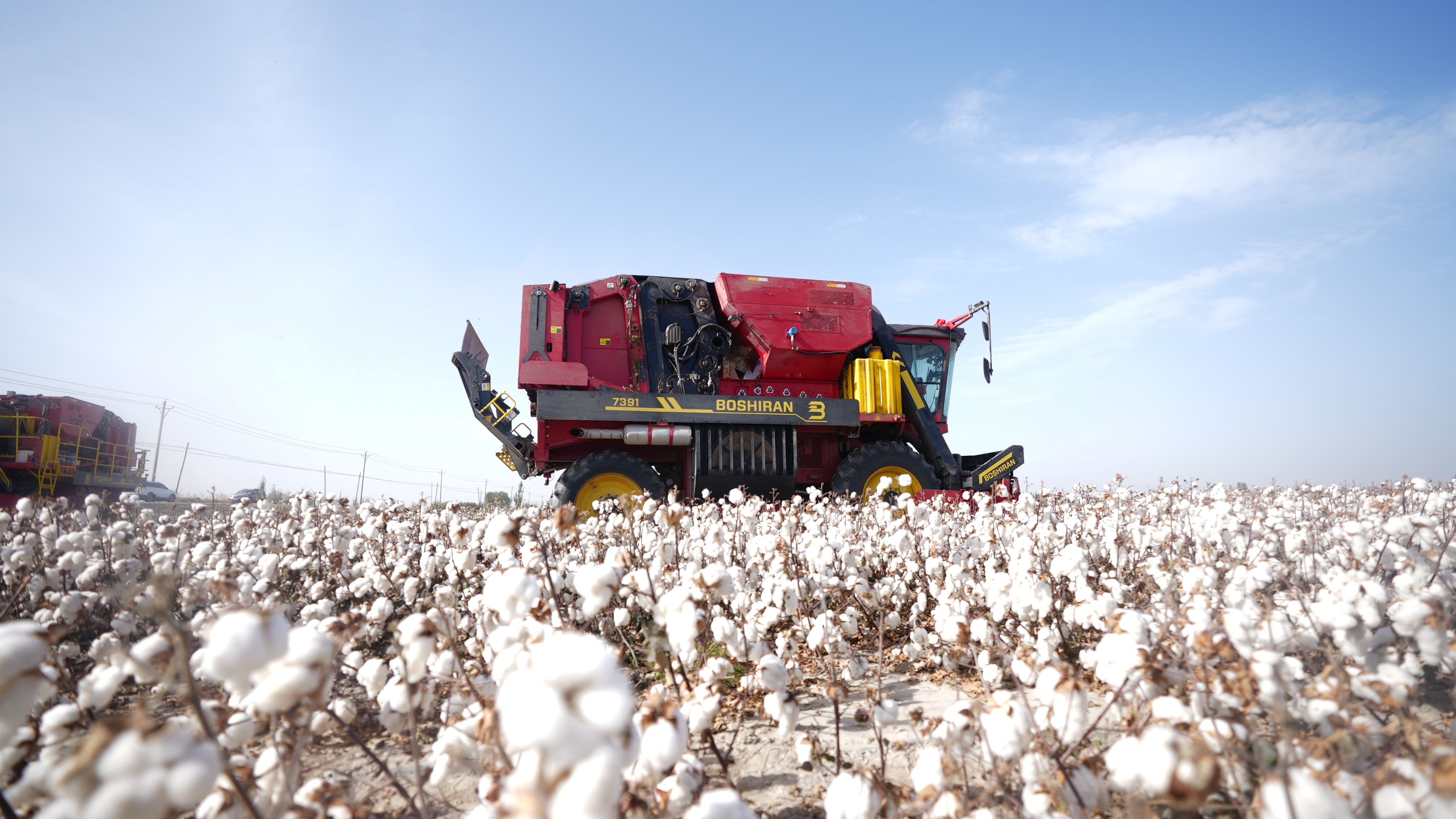
Cotton harvester machines work in a field in Awat County, northwest China's Xinjiang Uygur Autonomous Region, October 18, 2021. /CGTN
Cotton harvester machines work in a field in Awat County, northwest China's Xinjiang Uygur Autonomous Region, October 18, 2021. /CGTN
Northwest China's Xinjiang Uygur Autonomous Region is ushering in what looks like a bumper harvest season. White cotton, red apples, peppers and yellow sea-buckthorn fruits across vast swathes of land offer a riot of color.
CMG teams traveled to Xinjiang to record these joyous events from multiple angles using aerial photography, live broadcasts in multiple languages and interviews.
Xinjiang is rich in natural resources, which benefit from its unique climatic conditions. The ample sunlight and large temperature differences between day and night make the region an ideal place to grow crops.

Apples in Aksu, Xinjiang, China. /CGTN
Apples in Aksu, Xinjiang, China. /CGTN
Xinjiang offers a wide variety of fruits, and many say Aksu Prefecture has the best apples in the region. An arid, temperate continental climate and long hours of sunlight provide perfect conditions for apple planting in the prefecture.
Aksu has witnessed rapid development in its apple industry. Today, its apples are highly sought-after at home and abroad.

Sea buckthorn in Habahe County, Xinjiang, China. /CGTN
Sea buckthorn in Habahe County, Xinjiang, China. /CGTN
If apples are not unique enough, sea buckthorn can definitely be called a name card of Xinjiang fruit.
Sea buckthorn, also known as sandthorn or seaberry, contains plenty of vitamin C, even higher than kiwifruit. Farmers in Habahe County in northern Xinjiang are now harvesting the small yellow fruit, whose sweet taste makes them ideal for making juice.
China's output of sea buckthorn fruit accounts for 90 percent of the world's total, and the industry thrives in Xinjiang.

Yanqi Hui Autonomous County, known as the "red county" in Bayingolin Mongol Autonomous Prefecture, is now harvesting chilies. /CGTN
Yanqi Hui Autonomous County, known as the "red county" in Bayingolin Mongol Autonomous Prefecture, is now harvesting chilies. /CGTN
Xinjiang is also rich in chilies.
It is one of the country's major areas for growing chili peppers. With a 400-square-kilometer planting area, the region produces 250,000 tonnes of dried chilies per year, accounting for one-fifth of the nation's total.
Yanqi Hui Autonomous County, known as the "red county" in Bayingolin Mongol Autonomous Prefecture, is now harvesting chilies. As one of the biggest chili production bases, Bayingolin expects to harvest over about 3 million mu, some 200,000 square meters this year.

Harvesting cotton in Awat County, Xinjiang, October 18, 2021. Zhang Wanbao /CGTN
Harvesting cotton in Awat County, Xinjiang, October 18, 2021. Zhang Wanbao /CGTN
Cotton in Xinjiang is also ready to be picked ahead of the onset of winter.
Dubbed the "Cotton Town," Awat County has a long history of cotton planting.
"Xinjiang cotton accounts for a large proportion of China's cotton. As the largest cotton-growing area in the country, Xinjiang recorded 5.16 million tonnes of cotton output in 2020, accounting for 87.3 percent of the country's total," said Cui Jianping, a researcher at the Economic Crop Research Institute of Xinjiang Academy of Agricultural Sciences.
Worth mentioning is that Xinjiang cotton also accounts for about 20% of the world's cotton, which is inestimable in the production status of world cotton.
Modern agricultural machinery has been adopted in cotton picking in recent years, boosting the development of the industry and benefiting local farmers. Official data shows that the mechanical cotton-picking rate in the region reached 75 percent in 2020.

